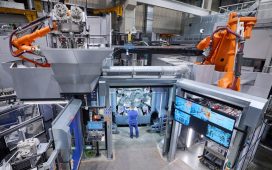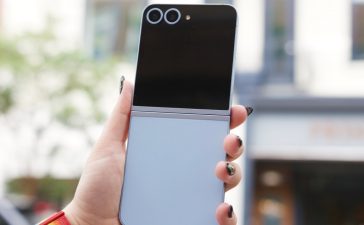Cruise, the autonomous vehicle company backed by General Motors, revealed a wheelchair-accessible robotaxi that it says could start picking up disabled passengers as soon as next year.
The reveal of the newly accessible robotaxi is a major step toward fulfilling the dream of people with vision, hearing, and mobility impairments, who have long held out hope that autonomous vehicles represent a new way of getting around.
The vehicle is a version of Cruise’s fully driverless, shuttle-sized Origin vehicles, which lack traditional controls like steering wheel and pedals. It has been modified to include a retractable ramp, as well as added space inside and floor clamps for wheelchair users. The vehicle is the product of three years of development and testing between Cruise, GM, and its partners in accessible vehicle design at BraunAbility and Q’Straint. The company also consulted with its advisory council on accessibility, which includes dozens of advocates.
1/9
Raymond Rudolph Photography
Over 25 million Americans have disabilities that make traveling outside the home difficult. Historically, car companies have provided little relief, producing vehicles that are either inaccessible or cost thousands of dollars to retrofit for a driver with disabilities. Traditional transportation services are notoriously inaccessible and often refuse service to people with disabilities. AVs, and especially robotaxis, present a tantalizing solution.
Indeed, advocates from the disability community have voiced their support for AV development at many crucial moments, most recently testifying in favor of Cruise and Waymo’s application to the state of California for expanded robotaxi service.
But there have also been frustrating delays, as companies have prioritized non-wheelchair accessible vehicles (WAV) in their various tests and deployments across the country. A number of companies, including Volkswagen, Waymo, and others, have been working on new designs they say are intended to benefit disabled passengers — but few have shown off an actual product until now.
Cruise says it has taken the issue of accessibility seriously since day one, hiring a full-time accessibility program manager for its fleet of driverless cars in San Francisco. Cruise says it built the Origin, its first purpose-built AV, with modularity in mind. From the low floor and high roof to the double-wide doors and removable seats, Cruise views the Origin as a blank canvas that it can modify with customer feedback.
The vehicle has been designed to be able to pick up and drop off wheelchair users from a four-inch curb, the company said. As of now, it can only accommodate people who use specific brands of wheelchairs, including Permobil M-Series, Quantum Q6 Edge, and SM Quickie Q500 / 700M / Q7 chairs. Cruise says people who use manual wheelchairs may need a companion to help secure the straps.
Notably, Cruise is calling its approach “multi-generational,” meaning it intends to update the design based on feedback from users. “Designing a self-driving vehicle that accommodates as many wheelchair users as possible is a distinct technical challenge that has never been done before,” the company added.
The new accessible variant will start closed-course testing next month
The new accessible variant will start closed-course testing next month. Pending regulatory approval, as well as user feedback, the accessible Origin could hit the streets for pilot testing as soon as 2024. The Origin needs an exemption from safety rules from the National Highway Traffic Safety Administration so the company can produce more of them. Cruise CEO Kyle Vogt recently said that the federal government was expected to make a decision on the Origin very soon.
Until recently, Cruise has faced criticism around its lack of accessibility. The company was accused by the San Francisco Municipal Transportation Authority and several other government agencies of failing to offer service in low-income and minority areas or accommodate people using wheelchairs. The company has also been criticized for blocking emergency vehicles.
Last month, one of its driverless Chevy Bolt vehicles collided with a firetruck in the city, leaving one passenger injured. Cruise agreed to reduce its fleet by half while the incident was under investigation.












